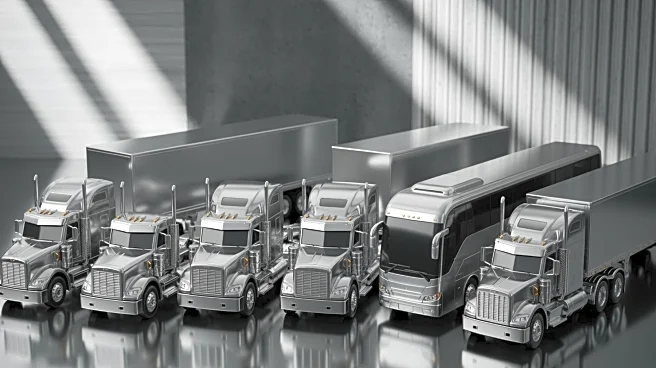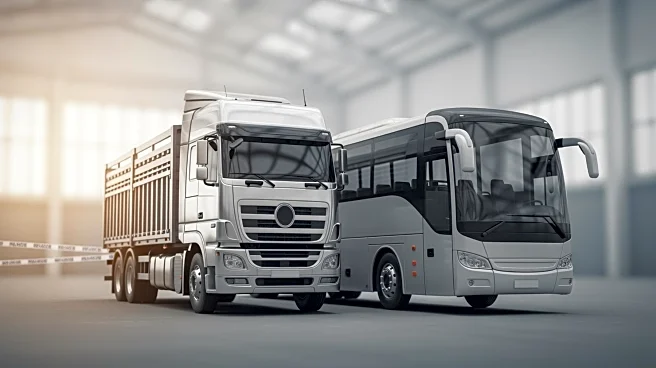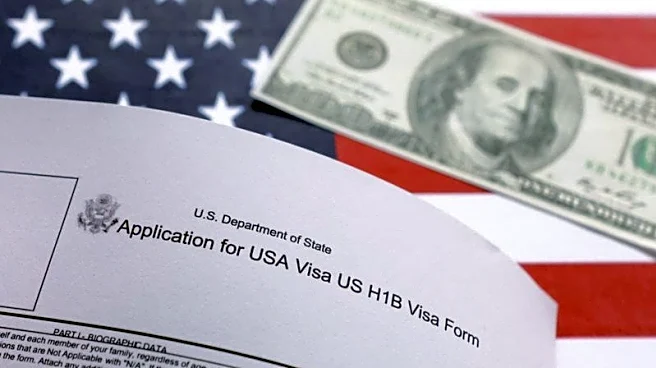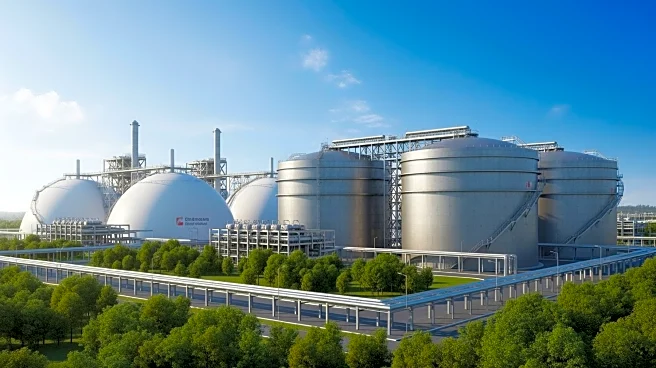What's Happening?
On October 17, President Donald Trump signed an order imposing 25% tariffs on imported medium- and heavy-duty trucks and 10% tariffs on imported buses, effective November 1. This decision is part of a strategy
to protect domestic manufacturers from foreign competition and to incentivize the production of vehicles within the United States. The tariffs are designed to encourage automakers to build in the U.S. by offering rebates on certain imported auto parts, thereby creating well-paying jobs for Americans. The move has been positioned as a measure to ensure the financial health and strength of U.S. truck manufacturers, which is deemed crucial for national security.
Why It's Important?
The introduction of these tariffs is a pivotal moment for the U.S. automotive industry, as it seeks to balance protectionism with global trade dynamics. By imposing tariffs, the administration aims to reduce foreign competition and bolster domestic production, potentially benefiting U.S. manufacturers like Peterbilt and Freightliner. However, the tariffs could also lead to increased costs for companies that rely on imported parts, affecting pricing and supply chains. The decision has drawn criticism from some industry groups, including the U.S. Chamber of Commerce, which argues that the tariffs could strain relations with key trade partners and allies.
What's Next?
As the tariffs are implemented, automakers and industry stakeholders will need to adapt to the new trade environment. Companies may explore ways to increase domestic production to mitigate the impact of tariffs, while trade partners affected by the tariffs, such as Mexico and Canada, may seek to negotiate or respond to the changes. The situation will require ongoing assessment to understand the broader implications for the U.S. automotive industry and international trade relations. Stakeholders will be closely watching the economic and political ramifications of this policy shift.












